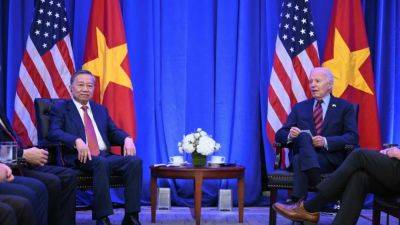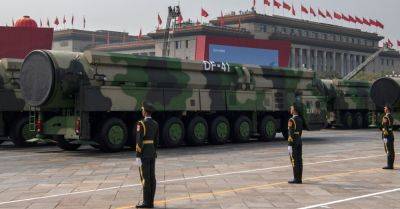What’s behind China’s launch of an intercontinental ballistic missile
TAIPEI, Taiwan (AP) — China test-fired an intercontinental ballistic missile into the Pacific Ocean on Wednesday in a rare occurrence, adding to tensions in the region where multiple countries have overlapping territorial claims and both Beijing and Washington seek to project their influence.
The launch was part of routine training by the People’s Liberation Army’s Rocket Force, which is in charge of conventional and nuclear missile operations, and was not aimed at any country or target, the Defense Ministry said in a statement.
The ICBM, carrying a dummy warhead, landed in a designated area in the sea, the ministry said, without specifying where exactly.
China rarely tests ICBMs out in international waters, with some experts tracing the last such deployment back to May 1980, when Beijing launched a DF-5 missile into the South Pacific. Usually, the PLA test-fires ballistic missiles in China’s remote Xinjiang region or in the Bohai Sea.
Why the Pacific, why now?
China choosing the Pacific Ocean as the location for test-firing its missile comes across as both a display of its increased nuclear capabilities and as a warning to the United States and its allies in the region, experts say.
“There is no other potential audience, as China does not expect to have to confront the EU or the U.K. militarily,” said Steve Tsang, director of the SOAS China Institute in London.
The test also comes weeks ahead of an expected call between Chinese leader Xi Jinping and U.S. President Joe Biden. It marks an increase in regional security tensions with U.S. allies Japan and the Philippines, and a continuation of frictions with the self-ruled island of Taiwan, which Beijing claims as its own territory.
Taiwan’s Defense Ministry said Wednesday it







